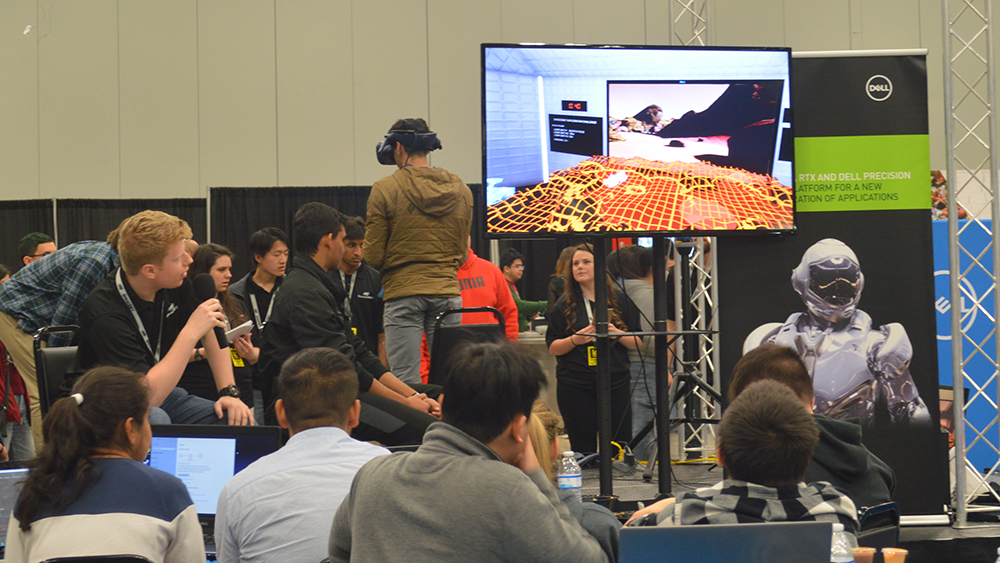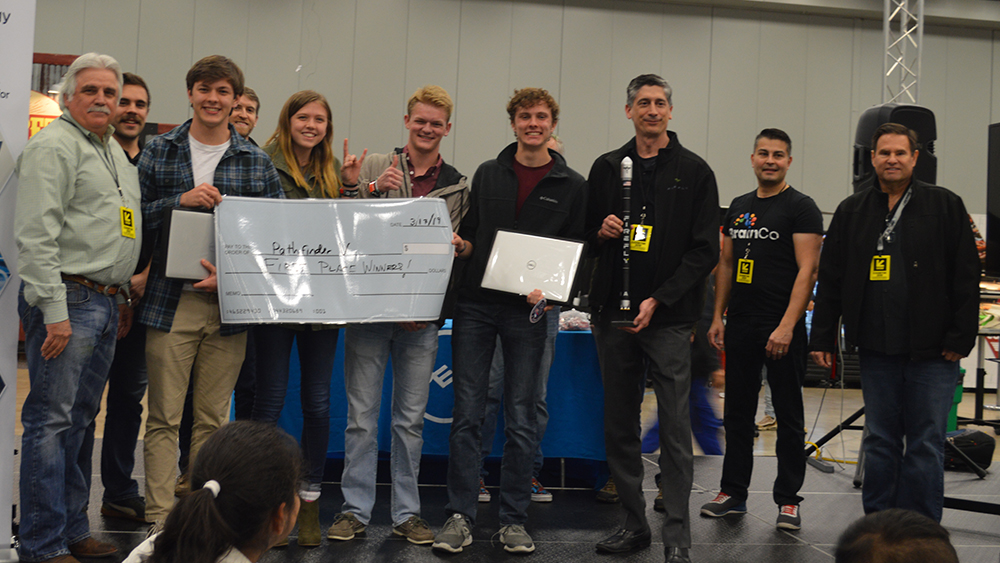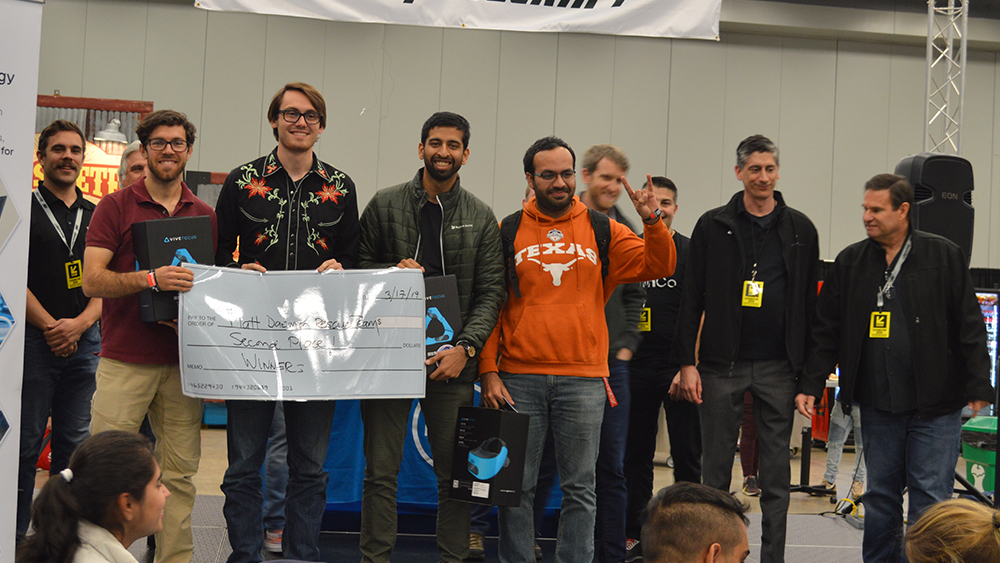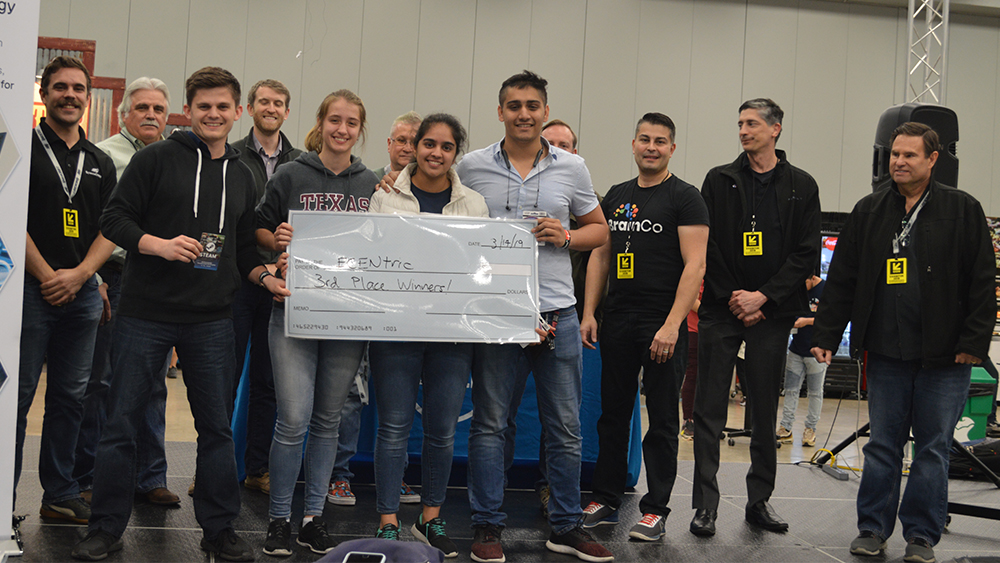
During South by Southwest (SXSW) 2019, the SpaceCRAFT Exploration Challenge offered teams this test: rescue an astronaut that has crashed on a planet in the TRAPPIST-1 system using artificial intelligence (AI), virtual reality (VR), robotics and machine learning. The objective of the hackathon-style competition was to test a team’s ability to program a robot to interact with its environment to successfully perform the rescue operation using pathfinding and terrain/object recognition.
Teams across Texas competed in the event, including students from Texas A&M University, The University of Texas, the University of Texas Rio Grande Valley and Texas A&M University-Corpus Christi. The competition used Python code that interfaced with the SpaceCRAFT VR platform, built by the Aerospace Technology Research & Operations (ASTRO) Lab in the Department of Aerospace Engineering at Texas A&M University.

The first two days of competition were spent in intense coding and debugging. Each team acted as a crew charged with reprogramming a geology rover’s navigation software to become faster and more autonomous than was needed for its original mission. The teams had to code their own AI algorithms to improve the rover’s navigation and path planning capabilities.
With knowledge of the terrain around them and the terrain they’d already explored, their rover was required to search and find the astronaut’s crash site in the most efficient way possible while avoiding hazards using the algorithms designed by the team.

For the final day of competition, crews chose one person on their team to remotely operate the rover while inside VR in a simulated exoplanet habitat control room. In this environment the contestants were given controls to set waypoints for the rover, while the contestant’s algorithms considered maneuvers to avoid obstacles. The area around the astronaut was deemed a “dead zone,” where no human commands could reach the robot, so it needed to rely on radio detection finding techniques to find the exact position of the astronaut’s beacon.
“It was fascinating to hear each of the university teams talk about the different strategies they pursued during 48 hours of intense programming. Most teams did really well, but only a few made it close to completing the rescue operation in time,” said Professor Greg Chamitoff, Director of the ASTRO Lab and former NASA Astronaut.
First place was awarded to Team Pathfinder V, a joint team from Texas A&M and The University of Texas (UT) with Tanner Hoke, Mallory Butt, Malachi Mayfield and Zach Summers. Second place went to The Matt Damon Retrieval Team from UT, with Scott Staniewicz, Rahul Moghe, Tucker Haydon, Lakshay Narula and James Bell, and third place went to Texas A&M’s Team ECENtric, with Wesley Myers, Maria Dmitrievskaia, Paurushmani Singh, Radhika Soni and Sean Kersch-Hamar.

This event was sponsored by several companies, including Dell Computers, NVIDIA, Vive, Future Tech Live, Nvidia, NASA, Texas Space Grant and Firefly Aerospace. Prizes for the event included a signed book by Neil Degrasse Tyson, Steam gift cards, Vive Focus VR Headsets and Dell mobile workstations.
During the SXSW competition, the SpaceCRAFT team
ran demos of their VR platform for the general public with several space mission scenarios, such as bases on the Moon and Mars, spacewalk simulations, and exoplanet TRAPPIST-1d, the setting for the competition.